



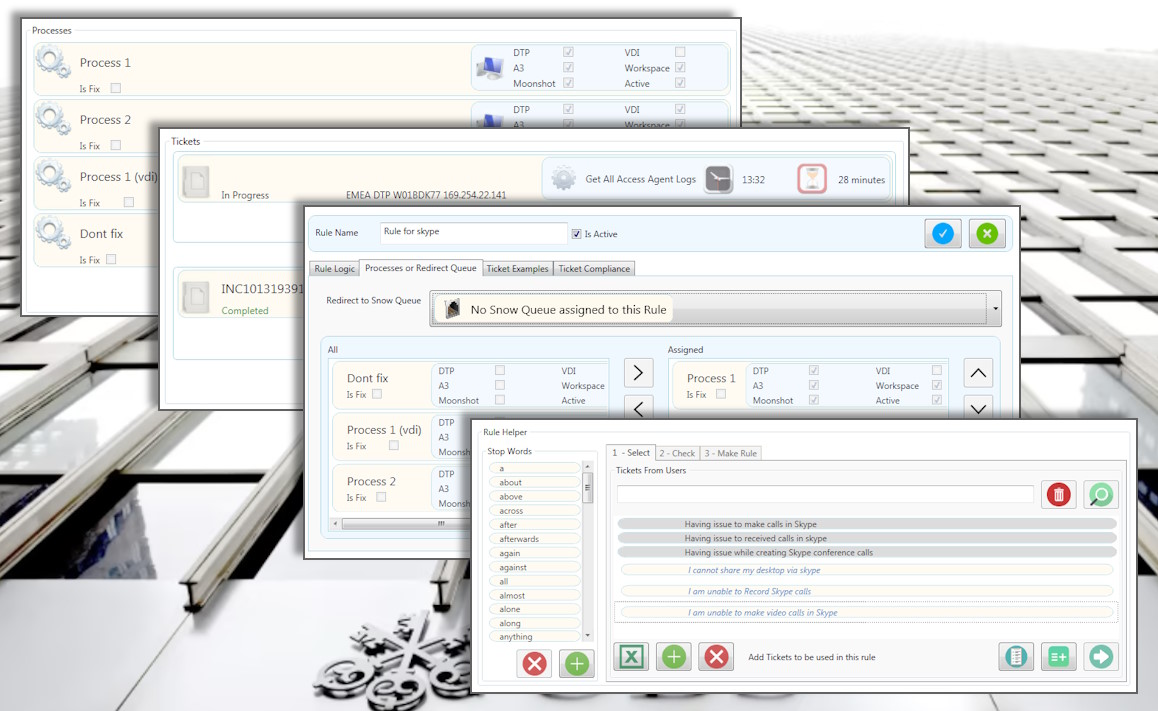

- If a known fix was available, the system displayed a popup wizard on the user's desktop to guide them through a remote resolution.
- If additional assistance was needed, the error was routed to the appropriate ServiceNow helpdesk queue.
- Configure specific fixes for known issues.
- Define routing criteria for directing problems to the correct helpdesk queues.


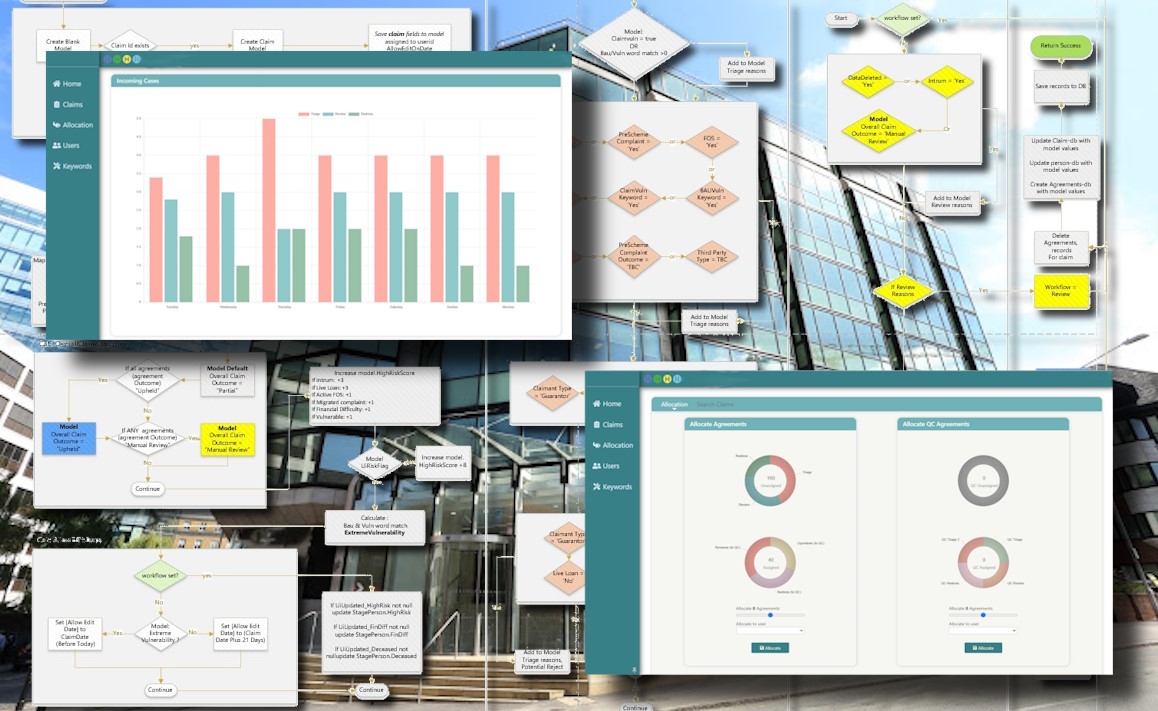

Automated Workflow: Integrated API, ETL processing, and direct payment for eligible cases.
Management Queue: Automatic case allocation based on load balancing and priority rules.
Case Worker Interface: Web-based tools for reviewing, updating, and completing cases with attachments and correspondence.
Manager Dashboard: Real-time insights and tools for reallocating cases to optimize team performance.
Efficiency Gains: Automated workflows reduced manual intervention.
Improved Resource Management: Load balancing ensured equitable distribution of cases.
Scalable and Flexible: Modular design allowed future enhancements and adaptation to new scenarios.






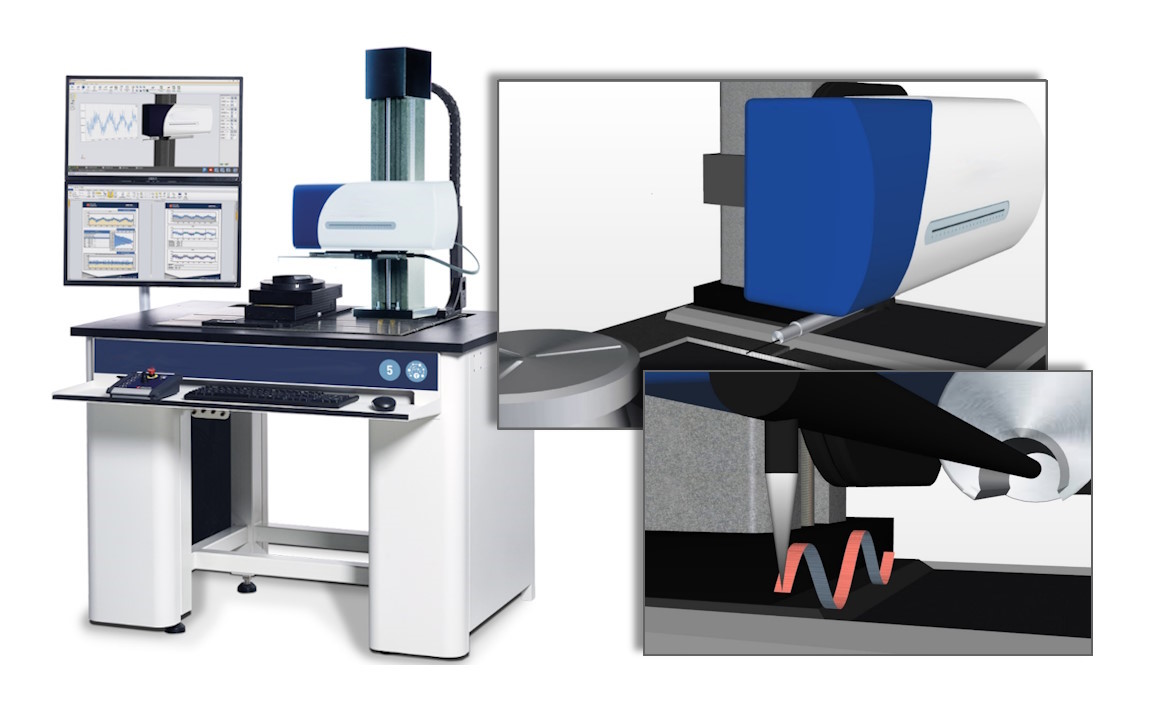



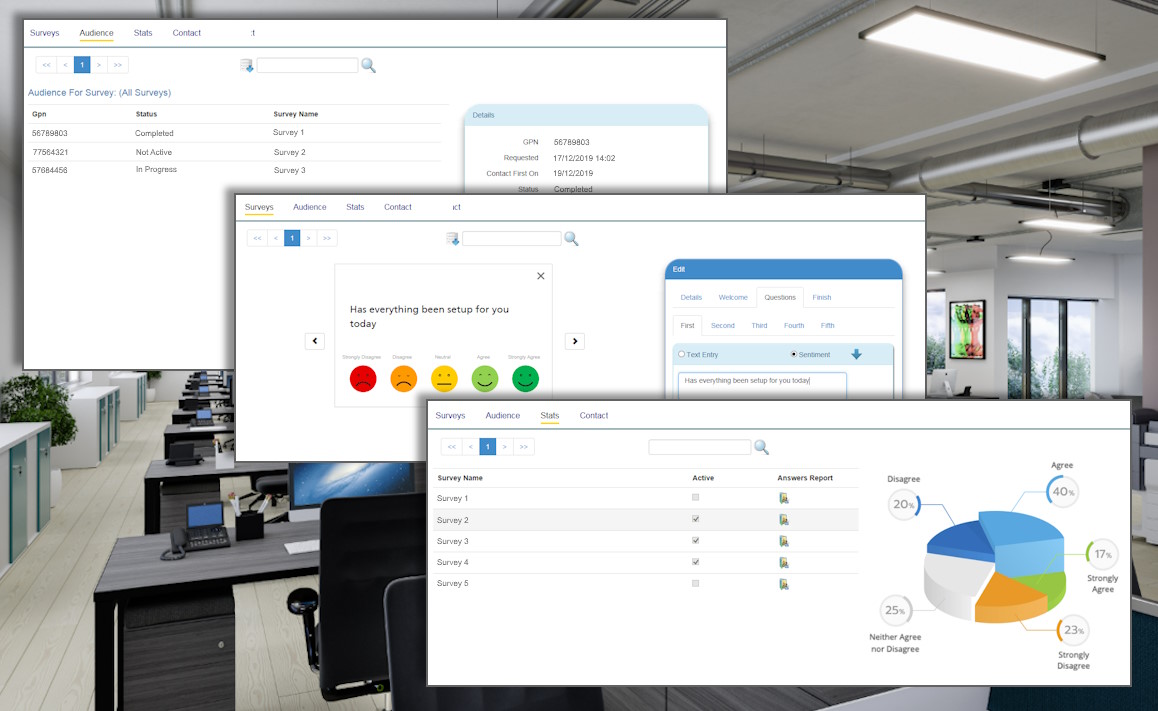



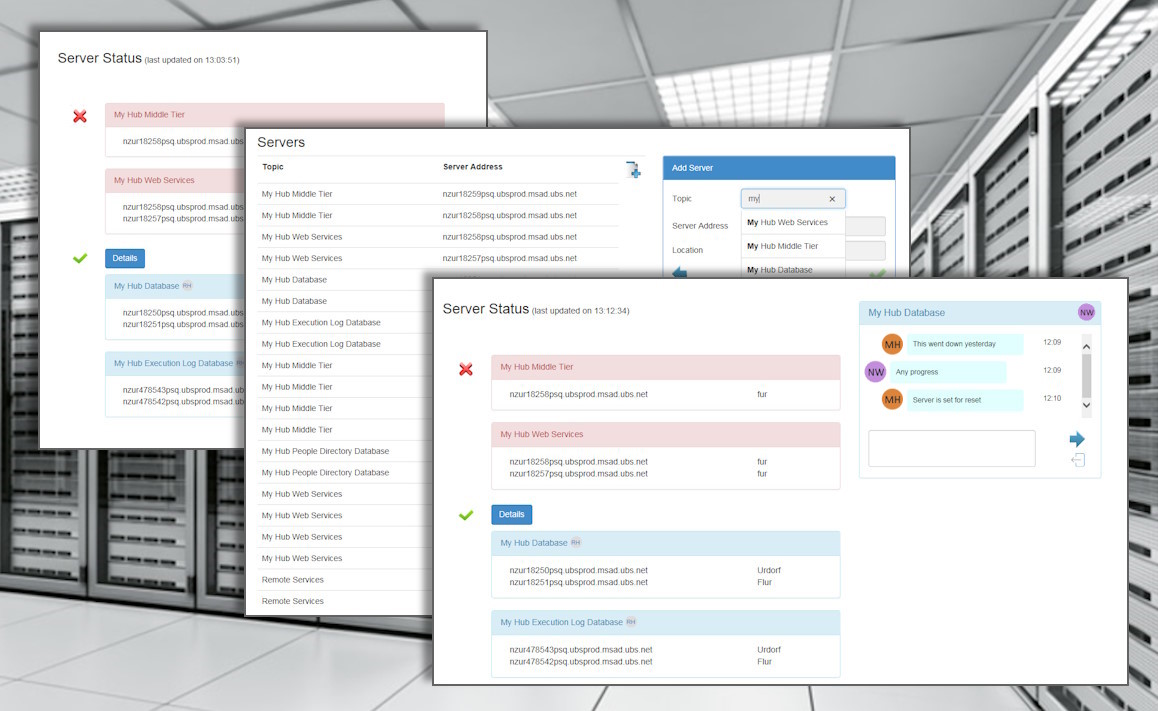

Server Monitoring and Grouping: Servers could be added individually or grouped for consolidated management. Status updates were displayed in real-time on a central dashboard.
Subscription-Based Notifications: Users subscribed to specific servers or groups and received immediate alerts when errors were detected.
Automated Chat Creation: On detecting a server error, the system created a dedicated chat room, notified subscribers, and logged key details for efficient troubleshooting.
Automatic Chat Closure: Chats closed automatically when the affected server returned to a healthy status, ensuring focus on active issues.
Collaborative Interface: The chat room allowed participants to exchange information, share logs, and coordinate solutions in real-time.
Reduced Downtime: Faster detection and collaborative resolution minimized server downtime.
Enhanced Coordination: Real-time notifications and chat functionality improved team communication and issue resolution times.
Streamlined Processes: Automated workflows, including chat creation and closure, reduced manual intervention and increased productivity.
Scalable Solution: The system’s modular design supported expansion to additional servers and teams.



